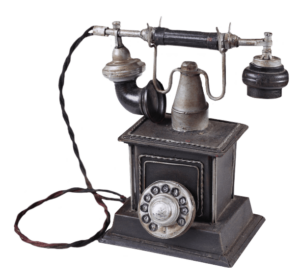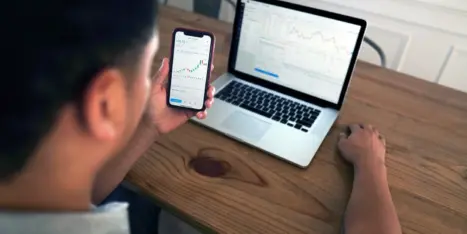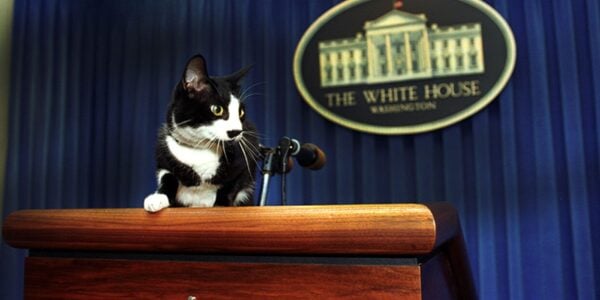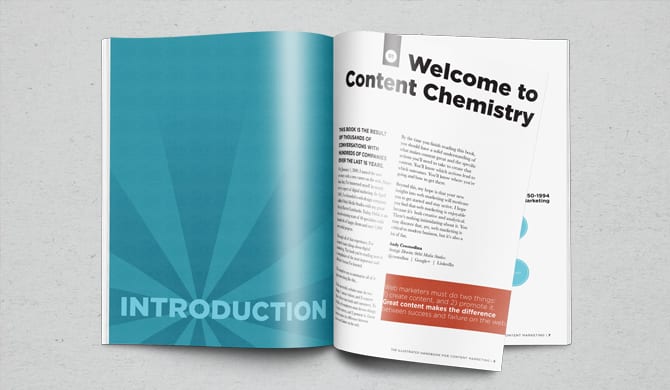Imagine you’re sitting at a desk, staring at a new piece of technology. It’s a type of tool that allows you to communicate in new ways. It connects people instantly. It’s supposed to be better than the older tools. Everybody’s talking about it. They say you should use it but you’re not sure how or why…
…the year is 1910 and the device is a telephone.
There’s the phone on your desk. Should you use it? It’s a silly question, isn’t it? You don’t use a phone unless you actually have a good reason. Twitter is the same thing. Just like that phone, without a reason to use it, what’s the point?
To understand why you may want to use Twitter, you need to know what it is and what you can do with it. Then you might find you have a reason to try it.
So what is Twitter?
Twitter is a “platform-independent-social-networking-microblogging service”…sounds fancy. But when you break it down into its functions, it’s actually very familiar. When you look at the uses of Twitter you see the ways in which it’s really just like old technology. Twitter is:
- A giant phone book
- A tiny radio station
- A party line
Twitter is a giant phone book
For finding people it may even be more powerful than Facebook, Google, and LinkedIn, because you can find people who are thinking about specific things, people with specific, real-time intentions, and people with very specific interests. Let’s try playing with Twitter’s advanced search to find some people…
- Who is asking about wine within five miles of my ZIP code? (10 people)
- Who is unhappy about snowmobiles? (5 people)
- Who is talking about tango dancing in Russian? (11 people)
Not bad! But wait, there’s more. Just like the Yellow Pages, it’s also a tool to be found. By adding keywords to your bio, and adding hashtags to topics in your tweets (that’s the “#” before certain words), you make yourself more findable. In other words, just like a phone book, Twitter is a research and networking tool.
If you want to find people in a giant, up-to-the-second phone book, use Twitter.
Twitter is a tiny radio station
Some radio stations are entertaining, others are informational. Some stations produce their own shows, some just play the shows of others. In this same way, Twitter is a tool to broadcast information, be it personal or professional, yours or someone else’s, mundane or profound.
Many tweets are simply tiny announcements, either original or shared (using RT or “Retweet”). The sum of all these announcements is the character of each person’s little radio station. If people like you and your station, they’ll tune in and subscribe (follow). Want to invite people to a public event? Want to give some general advice? Want to share something interesting you found? These are all reasons to send a broadcast tweet.
If you’ve got something to broadcast, or if you want to listen to the broadcasts of others, use Twitter.
Twitter is a party line
Most Twitter users have probably never used a party line. But back in the day, before one household had five phone lines, five or more households had one phone line! Anyone who picked up could join in the conversation. Hard to imagine, isn’t it? Not really. It’s happening on Twitter right now.
Many say the true usefulness of Twitter, like all good things online, is this kind of two-way communication. The dialog. Yes, Twitter can be one-to-one communication by using DM or “Direct Message” in your tweets. This is a lot like a regular phone call.
But most conversation on Twitter is many-to-many communication. By using @ or “Mentions” in your tweets, they can be directed at certain people, but viewed by anyone. This lets you have a conversation that others listen to and join. So it’s actually just like those old party line phones from decades ago. Just open your browser, listen in and join the call.
In other words, Twitter isn’t just a place for one-way broadcasts. It’s useful for all sorts of broad-reaching conversation. You can ask and answer questions, give and get advice, chat, gossip and discuss pretty much anything.
If you want to talk on a huge party line, use Twitter.
Should you use Twitter?
Twitter is powerful, capable of sparking revolutions, overthrowing governments and announcing what kind of sandwich you’re eating. Should you use it? Maybe! Maybe not.
The true nature of Twitter is that it is a connector of people. But just like that phone, don’t use it unless you have a good reason – you want to find specific people, create a tiny radio station or talk on a party line.
If you’re not using it yet, don’t feel bad. Don’t start using it just because you’re afraid you’re getting left out. First, think about what you’re trying do to. Pick your purpose, and then consider what tools will help you achieve it. If you want to find people, broadcast something, or have public conversations, Twitter might be perfect.
Find me, subscribe to my tiny radio station or start a conversation with us at @orbiteers.
Thanks to @manamica from Lightspan Digital for her digital marketing and social media insights.





